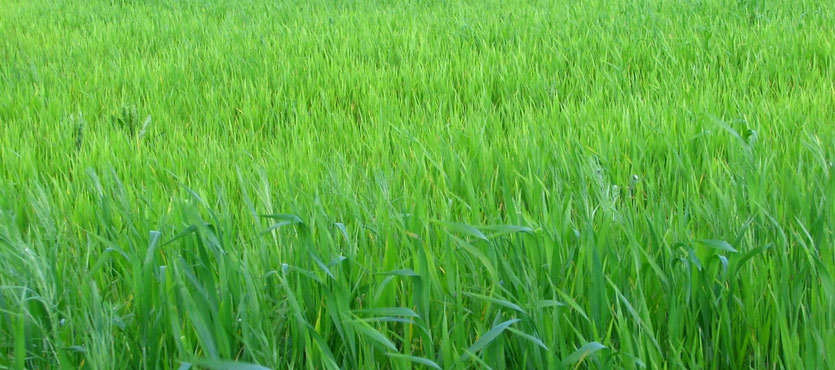There are a number of varieties of Florida landscape grasses, and these are often chosen because they are best suited to thrive in your location. Let’s explore the top Florida grasses and how they make their way to your lawn.
Florida Grasses
- St. Augustine Grass – As the most common grass planted for Florida home lawns as well as commercial buildings, it is native to the Mediterranean region as well as the Gulf of Mexico. Having become accustomed to the Florida’s humid, subtropical conditions, St. Augustine grass thrives in different soils and presents the coveted lush green lawn. It is established through the placement of sod for new lawns and replaced by plugs for re-establishment of bare areas. St. Augustine grass requires mowing, watering, and fertilization to thrive. This type of Florida grass is vulnerable to chinch bugs, which should be eliminated with pest control and treatment for a dynamic thick green lawn. St. Augustine Grass comes in a number of varieties including:
- Del-Mar – A dark green variety, Del-Mar grows well in full sun. It is shade tolerant and cold tolerant, maintaining its hue even when temperatures drop.
- Floratam – The most common type of St. Augustine grass, Floratam is used in most residential and commercial lawns. It requires full sun for best appearance and does not thrive in shade.
- Palmetto – An aggressive growing grass with rich green hues, Palmetto thrives in partial shade or full sun, and is cold tolerant.
- Seville – The fine leaf Seville is emerald in tone and grows best in full sun.
- Bahia Grass – Bahia Grass, native to Brazil, came to the United States in the early 20th century for use in the south’s sandy soil. Bahia Grass is grown from sod or seed and is drought tolerant once established. Bahia does not require a great deal of fertilization and weed control must be done under specific conditions with specific pesticides to retain the integrity of the lawn. Bahia Grass requires full sun and weekly mowing. It is intolerant of salt water, foot traffic, and shade. There are multiple varieties of Bahia Grass, but the following is most common in Florida lawns:
- Argentine – Dark green, cold tolerant, insect and disease resistant, Argentine is the best Bahia for home lawns.
- Zoysia Grass – Zoysia is common in both residential and commercial lawn applications, growing in a variety of soils, thriving in full sun, and possessing shade tolerance. Zoysia once established with sod is dense and weed resistant. Zoysia requires less mowing but more fertilizing. Professional lawn care delivers best results with Zoysia.
- Meyer – The most common Zoysia grass used at homes and businesses, it is dark green and grows more quickly than other varieties.
- El Toro – Offering a faster establishment, El Toro is shade resistant.
- Empire – Presenting as dark green, Empire grows well in sandy and clay soil, making it a good choice for many home lawns.
- Empress – Bright green and soft, Empress can handle an abundance of foot traffic.
- Bermuda Grass – Established quickly with plugs or sod, Bermuda grass presents a dense, medium green turf. Bermuda is drought and salt tolerant, thrives in full sun or partial shade, and is resistant to foot traffic. Two types are available:
- Improved – Soft, durable, and dense, this Bermuda is most often used on golf courses and high-end home lawns.
- Common – A lighter green, Common Bermuda is a lower quality grass requiring less maintenance.
- Seashore Paspalum – Popular in coastal areas, Seashore Paspalum is salt tolerant, deep green, and grows well in heat. It is tolerant of excess rainfall, should be mowed regularly, and requires low levels of fertilization.
Xtreme Landscaping is ready to help you choose the best Florida grass for your home or business based on its characteristics and adaptability to your area.

